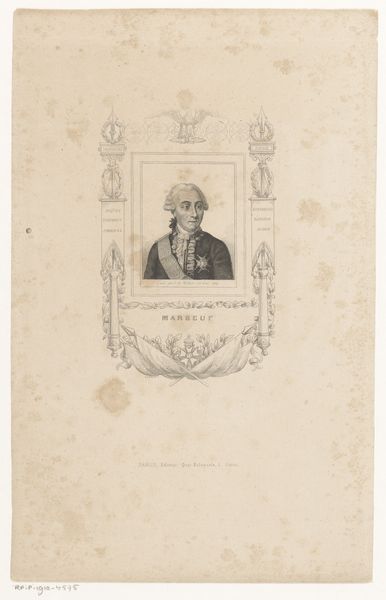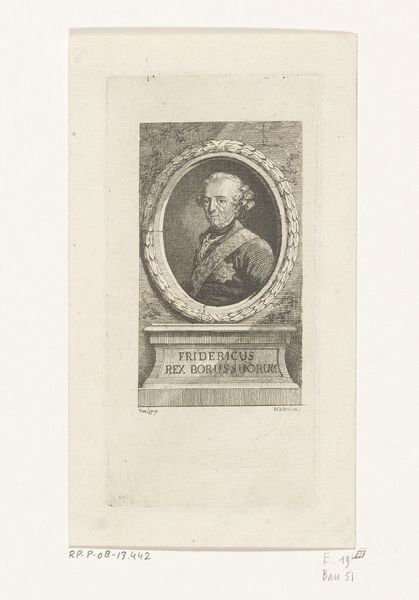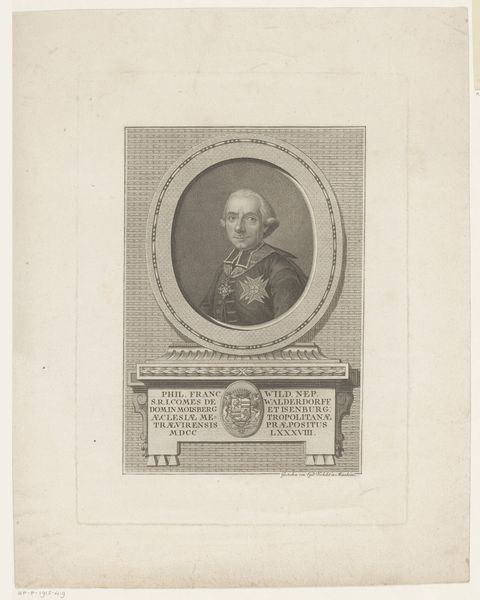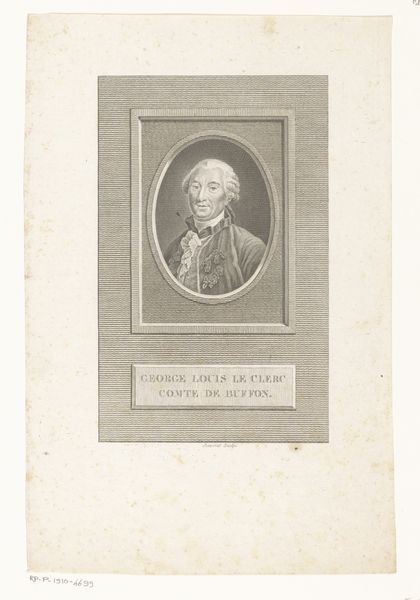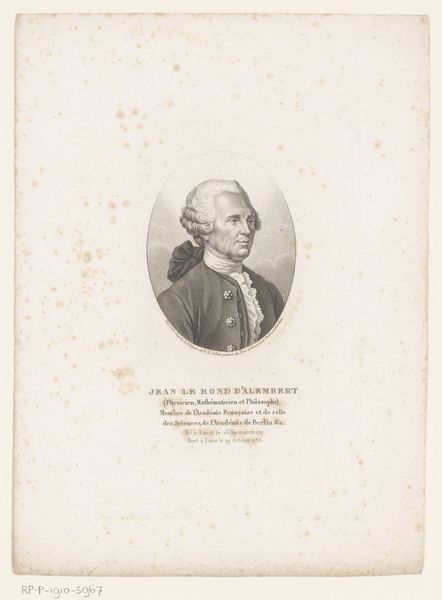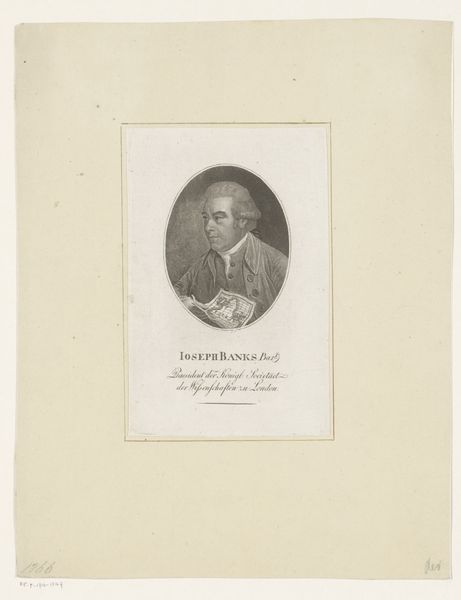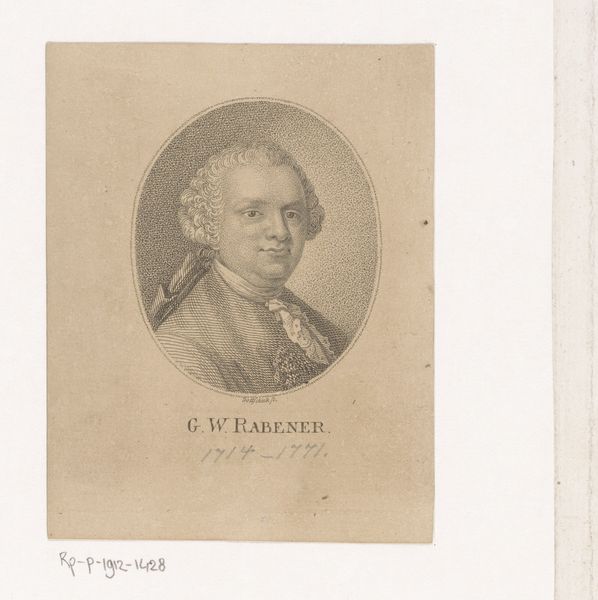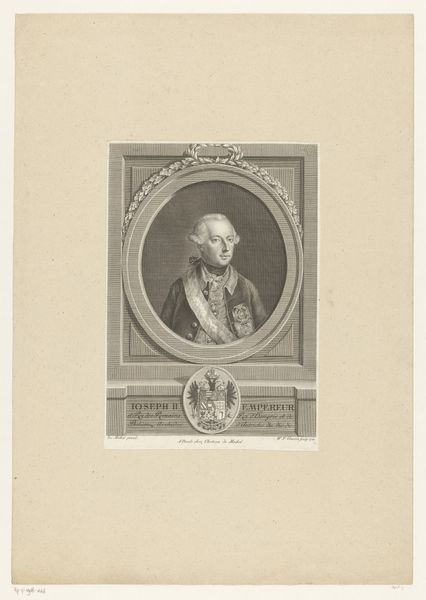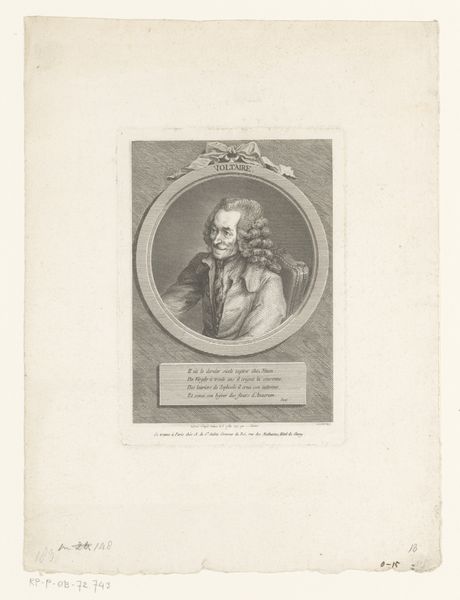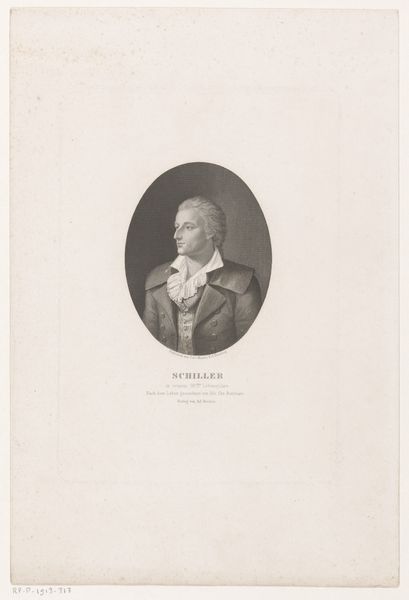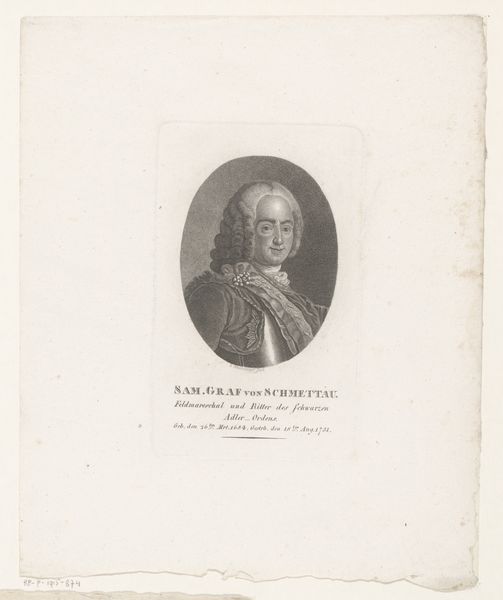
drawing, print, paper, engraving
#
portrait
#
drawing
#
neoclacissism
# print
#
paper
#
history-painting
#
engraving
#
watercolor
Dimensions: Plate: 9 5/8 × 8 in. (24.4 × 20.3 cm) Sheet: 8 15/16 × 5 1/2 in. (22.7 × 14 cm)
Copyright: Public Domain
Curator: Standing before us is a print called "General Washington," crafted in 1794 by Charles Willson Peale. It’s currently residing here at the Metropolitan Museum of Art. What strikes you when you first see it? Editor: It feels incredibly...formal, almost stoic. The composition, with Washington in that oval frame and the scene below, reminds me of a historical document, carefully presented. Is that deliberate? Curator: Absolutely. Peale, deeply embedded in the Neoclassical movement, intentionally crafted this print as a piece of nation-building, really. The engraving technique lent itself well to reproduction, allowing these images of Washington to circulate widely. The lower scene, the surrender at Yorktown, situates Washington as central to this world order. Editor: So, it's about manufacturing an image, a persona for the fledgling United States. What interests me, though, is what gets left out. The engraving gives it this detached, almost ethereal quality. There's a decided absence of the messy reality of revolution. The labor and struggles involved disappear entirely in this kind of sanitized depiction. How much is fact, and how much is propagandizing through aesthetics? Curator: That’s such a shrewd point. Peale wasn't merely documenting; he was curating a legacy. And this is the part that tugs at me. To truly capture an icon, one would have to also show vulnerability, perhaps a dash of inner conflict. We are allowed to see the stoic mask of a great man in the making; the vulnerability, however, has been carefully erased to fulfill a new Republic’s necessity for strong leadership. Editor: But even in its polished presentation, this work is important as a statement. Recognizing how historical events are consciously framed is a valuable step. We can’t accept representation as reality; we must continue seeking nuanced depictions. Curator: I love how this work provokes discourse and reflection. From brushstroke to printed copy, it challenges us to question both the figure in the frame, and our role as interpreters in this shared space. Thank you for that beautiful insight.
Comments
No comments
Be the first to comment and join the conversation on the ultimate creative platform.

